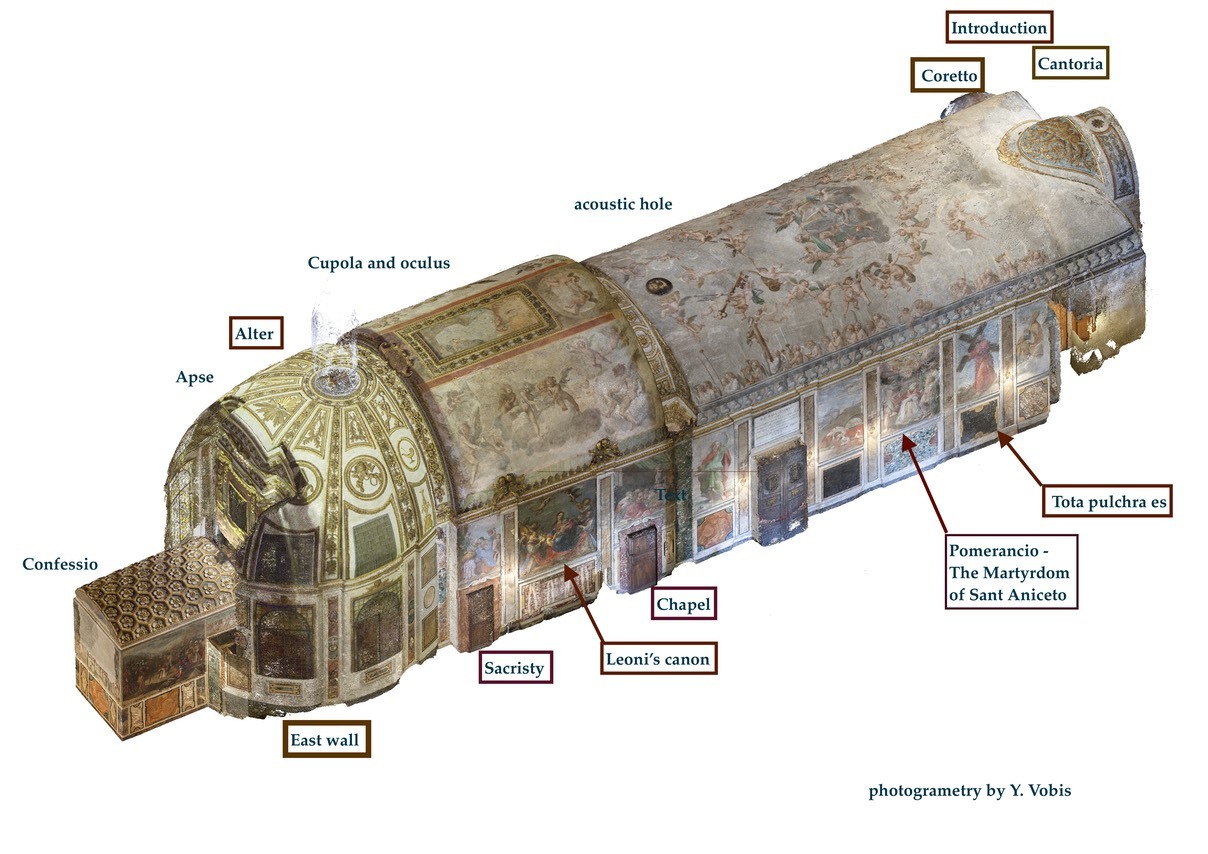What if physical spaces offer keys to unlocking the spiritual experience of sound? What if we knew more about sound and its relationship to specific architectures and the experience of transcendence? What would this mean for our spiritual experiences? What if religions knew more about how the “acoustic signature” of a place of worship can enable spiritual transcendence?
Take a toddler into an echoing concrete stairwell and she won’t stay quiet for long. Grownups often impulsively sing in the shower, subconsciously enjoying how the resonance enhances their vocal quality. And then, there is the characteristic blurring of notes as they echo from the domes and high ceilings of churches.
These are just a few examples of myriad ways that sounds and spaces inevitably interact. Spatial attributes such as the materials, dimensions, contours and configurations directly affect aesthetic qualities of sound such as intensity, reverberation or “wetness” and, in the case of music, its timbre and texture. And yet, human hearing is a process of both reception and cognition. Our ears take in the vibrations that constitute sound, and our brains find meaning in those sounds — consciously, as in the case of a blaring siren, or more subliminally as when a sound triggers a deep emotion or evokes an image.
Music has been integral to religious rituals and rites throughout human history and across cultures. For many worshippers, the experience of sound evokes a compelling spiritual response. From millennium old Buddhist chant to the mu’addhin’s call to prayer from atop a mosque, from the stately Lutheran chorales to the hands-raising Black gospel music, sounds are embedded in religious traditions and experiences. Sometimes those sounds can elevate our emotions to create a transcendent sense of wonder and awe, even producing the phenomenon of auditory frisson commonly known as “musical chills.”
Eighteenth-century German philosopher and Enlightenment thinker Immanuel Kant put it more poetically when he described music as “the quickening art” and theorized that musical sounds can “raise the soul’s fortitude [and]…elevate the imagination to the exhibition of those cases wherein the mind can be made to feel the sublimity, even above nature, that is proper to its vocation.”
And yet, surprisingly, although the transformative power of sound within religious rituals has been described across millennia and cultures, almost nothing is empirically known about the sonic dynamics that house, color and shape spiritual and aesthetic experiences.

Now, with funding from the Templeton Religion Trust, Professor Jonathan Berger of Stanford University’s Center for Computer Research in Music and Acoustics, is leading research that aims to establish a data-driven, holistic approach to the study of how sound and space combine to create what he terms “the aesthetic of the sublime.”
By tapping into existing research results and knowledge in multiple fields – musicology, art and architectural history, archeology, anthropology and religious studies, architectural acoustics, audio engineering and digital signal processing, psychophysics and cognitive neuroscience – and leveraging new technologies and methods, this project seeks to discover underlying principles for how the physicality of spaces modulates musical and ritual sounds in ways that elicit powerful emotive responses in listeners, and may inspire and inform their creators.

Using site recordings from a broad range of ritual and religious spaces – caves, canyons and funerary sites as well as the built environments of churches, synagogues and mosques – and creating software-generated acoustic models from architectural drawings, the research team aims to amass a library of virtual spaces. This library will serve as a framework for experiments to assess people’s psychological and behavioral responses to the virtually simulated “soundprints” of different environments. By manipulating sonic qualities and analyzing neuroimaging and behavioral responses (Berger describes a jaw drop as “the wow factor”) as well as recording research subjects’ self-reported reactions, the research team hopes to discover answers to questions such as these:
The project will be the first of its kind to integrate the architectural and spatial aspects of sound in an effort to better understand how sonic qualities make it possible to equate places of worship in the same way that Berger does: as musical instruments in their own right.
“Our audacious goal is to foster a new mode of thinking about musical aesthetics – one in which the architectural and spatial acoustics of the sound are integral,” he says. “I fully believe that we are poised to create a new domain of study that looks broadly and deeply at the interplay between sound and space, and at what this means in the history of art, culture and humanity.”
